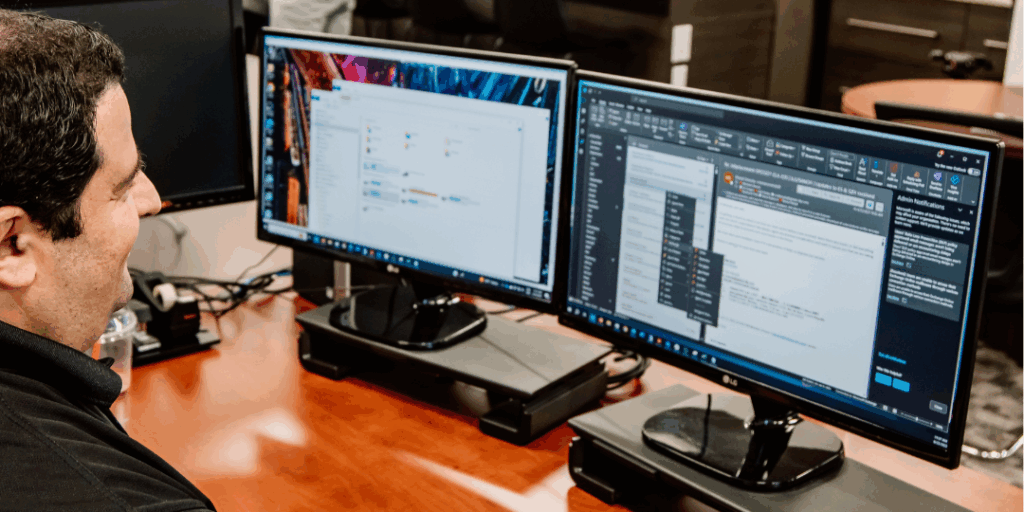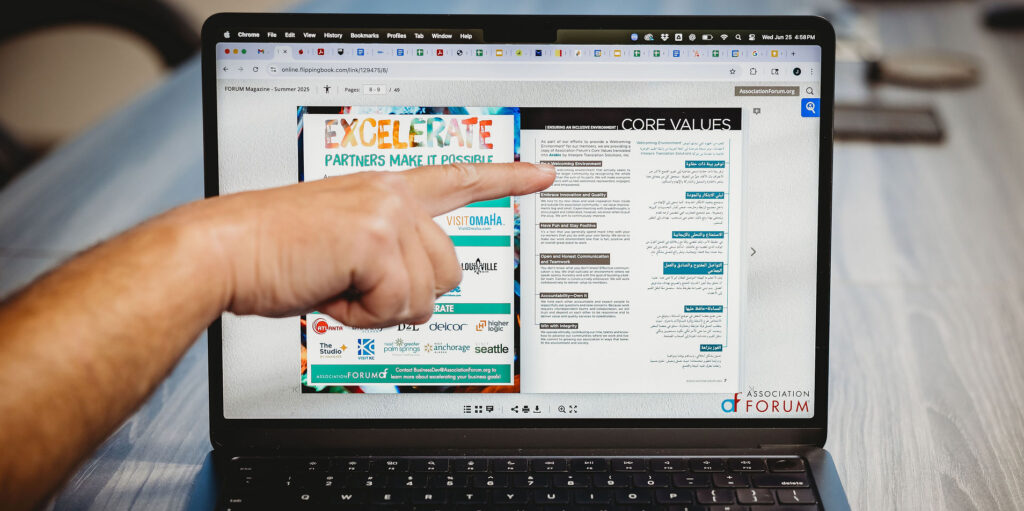How AI Translation Works, Where Human Review Still Matters, & What is Machine Translation

Machine Translation is transforming the way global companies approach language services. While it offers unmatched speed and scalability, real success comes from pairing it with human expertise. This blog explores the evolution of MT, where it excels, its limitations, and how businesses can make strategic use of MTPE to reach international audiences more effectively.
From expanding into new markets to fostering international collaborations, businesses across diverse sectors like manufacturing, healthcare, and software are constantly seeking reliable and efficient language translation services. While human expertise remains invaluable, Machine Translation (MT) has emerged as a transformative technology, revolutionizing how we approach translating content. But what exactly is MT, and how does it integrate with professional translation to deliver the quality, trust, and accuracy your business demands?
This article dives into the world of machine translation, exploring its evolution, benefits, and how leading language service providers leverage it to deliver exceptional results, always with a commitment to customer service and partnership.
What is Machine Translation (MT)?
Definition: Machine Translation (MT) is the use of specialized software to automatically convert text or speech from one language to another. Unlike simple digital dictionaries, modern MT systems, powered by advanced Artificial Intelligence (AI), analyze and interpret linguistic data, aiming to produce coherent and contextually relevant translations. For businesses seeking professional translation services, understanding MT is key to unlocking faster, more scalable language solutions.
The Evolution of MT: From Rules to Neural Networks
The journey of machine translation has been one of continuous innovation, evolving dramatically over the decades.
The timeline of major technological shifts in machine translation, including statistical models, hybrid systems, and the rise of neural machine translation models like Google Translate and DeepL.
- Rule-Based Machine Translation (RBMT): The earliest form, RBMT relied on extensive linguistic rules and dictionaries. While offering control, it often struggled with the nuances and complexities of natural language, leading to translations that felt stiff or unnatural.
- Statistical Machine Translation (SMT): A significant leap forward, SMT systems learned translation patterns by analyzing massive amounts of pre-translated human text. Early versions of popular online translators often leveraged SMT, delivering more fluid results than RBMT.
- Neural Machine Translation (NMT): The current pinnacle of MT technology and what many refer to as “AI translation”, Neural Machine Translation (NMT), uses deep learning neural networks to translate entire sentences or even paragraphs in context. This holistic approach results in remarkably more natural-sounding, fluent, and accurate translations, significantly reducing the need for extensive post-editing and making it a game-changer for language translation companies.
How Modern MT Works (But Simplified)
While the underlying technology is intricate, NMT’s ability to understand and generate language in a way that mimics human thought processes, such as through the following steps:
- Encoding: Your source text is “read” and converted into a complex numerical representation, capturing its meaning.
- Decoding: This numerical representation is then used to generate the translated text in the target language.
- Attention Mechanism: A crucial component, the “attention mechanism,” helps the system focus on the most relevant parts of the source sentence as it generates each word of the translation, enhancing accuracy and coherence.
This sophisticated process allows NMT to handle complex sentences and maintain consistency, making it a valuable asset for diverse content, from eLearning materials to technical documentation for manufacturing.
Benefits of Machine Translation for Your Business
Integrating MT into professional language services offers compelling advantages for B2B buyers:
- Unmatched Speed and Efficiency: MT can translate vast volumes of content in a fraction of the time human translation alone would take. This is critical for businesses with tight deadlines or urgent communication needs.
- Cost-Effectiveness for Scale: For certain content types, especially high-volume or internal communications, MT can significantly reduce translation costs, allowing you to scale your global reach more affordably.
- Enhanced Consistency: When configured with your specific terminology and translation memories, MT engines ensure consistent phrasing and branding across all your translated content, vital for software/technology companies or those requiring ISO-Certified translation.
- The Power of MTPE (Machine Translation Post-Editing): For high-stakes content, the true power lies in Machine Translation Post-Editing (MTPE). Here, MT provides a rapid first draft, which is then meticulously refined by a professional human translator. This blend of speed and human expertise ensures quality, trust, and accuracy, making it ideal for healthcare and legal content. This partnership between machine and human allows for faster turnarounds without compromising on quality.
Limitations: Where the Human Touch Remains Irreplaceable
While powerful, MT is not a magic bullet. Its limitations underscore the continued importance of human translators, particularly for nuanced or sensitive content:
- Nuance and Cultural Context: MT often struggles with humor, sarcasm, idiomatic expressions, and deep cultural references. A human translator understands these subtleties, ensuring your message resonates authentically with your target audience.
- Accuracy for Specialized Content: For highly technical, legal, medical, or creative content, absolute precision is paramount. While NMT is impressive, a human expert brings the necessary domain knowledge and critical thinking to guarantee flawless translations.
- Brand Voice and Subjective Intent: MT cannot inherently capture the unique brand voice or the subjective intent behind an author’s words. A human translator ensures your messaging maintains its persuasive power and aligns with your brand’s personality, crucial for marketing and advertising in the travel/hospitality sector.
- Data Security: While professional language service providers utilize secure MT solutions, it’s crucial to be aware of data privacy when dealing with sensitive information. Reputable ISO-certified translation companies prioritize your data security.
MTPE: The Optimal Human-Machine Partnership
For a family-owned company like ours, focused on quality, trust, and accuracy, MTPE maintains the delicate balance between linguistic accuracy and quickness. It combines the speed and efficiency of machine translation with the irreplaceable linguistic expertise, cultural understanding, and critical thinking of professional human translators. This allows us to offer both competitive pricing and accelerated delivery for suitable projects while ensuring the highest standards of customer service and delivering a translation that balances accuracy with human-like fluency.
The Interpro team participating in a hands-on training on machine translation, exploring neural machine translation tools, automated workflows, and quality assurance methods to support global translation and localization initiatives.
When to Leverage MT (and When to Prioritize Human Expertise)
Interpro works with many clients from different industries and content types. Every project will need a different workflow based on the language and the cultural/technical localization requirements. Interpro helps you understand that the right application for MT is crucial for maximizing its benefits.
Ideal Use Cases for MT (often with MTPE for best results):
- Large Volumes of Repetitive Content: User manuals, product descriptions, e-commerce listings, internal communications.
- Information Gathering: Quickly understanding the gist of foreign language documents for research or due diligence.
- Urgent Translations: When speed is the absolute highest priority for internal use.
When Human Translation is Essential (or MTPE with Extensive Post-Editing):
- Legal & Compliance Documents: Contracts, patents, regulatory filings – precision is non-negotiable.
- Medical & Pharmaceutical Content: Patient information, clinical trials – accuracy can save lives.
- Marketing & Advertising: Slogans, campaigns, creative copy – cultural resonance and persuasive impact are key.
- Highly Sensitive Information: Where data security, nuance, and human intuition are paramount.
- Literary & Artistic Content: Books, poetry – where artistic interpretation is central.
Example of Where Machine Translation Falls Short: Your Global Digital Strategy (SEO, GEO, LLMs)
For businesses targeting international markets, integrating MT into your content strategy demands careful consideration of digital optimization. We highly recommend integration of consultative advice from our native linguists in the target market and considering transcreation.
SEO (Search Engine Optimization) with MT
While MT can rapidly generate translated content, direct MT output often falls short of SEO requirements. For optimal search engine visibility, your translated content must:
- Integrate Localized Keywords: Direct translation of keywords isn’t enough. Research and integrate specific, relevant keywords used by your target audience in their local language.
- Ensure Grammatical Correctness & Fluency: Search engines prioritize high-quality, readable content. Poorly translated MT can negatively impact your rankings.
- Implement Proper Schema Markup: Use `hreflang` tags to signal language and regional targeting to search engines, preventing duplicate content issues and directing users to the correct language version.
This is how localized marketing content aligns with search intent in various languages, increasing visibility and engagement in target regions.
GEO (Geographic/Local Search Optimization) & MT
For businesses with a strong local presence or targeting specific regions, MT alone won’t suffice. Human post-editors are crucial for GEO optimization by:
- Adapting Local Terminology: Using region-specific terms (e.g., “lift” vs. “elevator”).
- Integrating Local Landmarks & Business Information: Ensuring addresses, phone numbers, and local references are accurate and relevant.
Optimizing for LLMs (Large Language Models) & Answer Engines:
As AI-powered search and conversational interfaces become more prevalent, optimizing your content for LLMs and answer engines is paramount. But if you don’t post-edit AI output, the content ends up falling flat and not having the same nuance or resonance to capture your original message intent.
High-quality, human-reviewed MTPE content will perform better because it is:
- Concise and Clear: LLMs favor direct, well-structured answers to queries.
- Accurate and Authoritative: Factually correct and linguistically precise content is preferred.
- Naturally Phrased: Content that reads naturally and flows well is easier for LLMs to process and present as coherent answers.
Partnering for MTPE Success
Machine Translation is a powerful tool that, when skillfully integrated with human expertise through MTPE, can enhance the efficiency, speed, and consistency of language translation services. Embracing this human-machine partnership means faster global communication, more cost-effective solutions, and maintaining quality, brand trust, and message accuracy.
It can be difficult for leaders and your team to know how to avoid the pitfalls that come with using AI translation. Interpro is here to help guide you with our balanced approach.
Interpro leverages cutting-edge MT technology while upholding our commitment to the human aspect of translation, focusing on partnership, customer service, and the nuanced understanding that only a human can provide. When you choose an ISO-Certified translation provider that understands the strategic application of MT, you’re not just getting a translation; you’re gaining a global communication partner dedicated to your success.
Ready to explore how a tailored Machine Translation strategy can benefit your business?
Contact Interpro today to discuss your specific translation needs and discover how our blend of advanced technology and human expertise can help you achieve your global objectives.
FAQs: Machine Translation
What is Machine Translation (MT)?
MT (Machine Translation) uses AI-powered software to convert text from one language to another. Unlike basic word-for-word tools, modern MT systems like Neural Machine Translation (NMT) analyze full sentences for contextual meaning, delivering more fluent and accurate translations.
Is Machine Translation good enough for business use?
It can be, especially when combined with human expertise through Machine Translation Post-Editing (MTPE). This process blends speed with linguistic accuracy, making MT ideal for high-volume or time-sensitive projects like internal documentation or technical manuals.
When should I choose human translation over MT?
Human translation is essential for content requiring nuance, emotion, or legal/technical precision, such as contracts, marketing campaigns, or healthcare materials.
What are the benefits of MTPE?
MTPE offers the best of both worlds. It speeds up the translation process while ensuring the final output meets professional standards for accuracy, consistency, and tone. This makes it a cost-effective and scalable option for businesses expanding globally.
Explore services:
Translation • Document • eLearning • Video & Multimedia • Consulting
Category: Translation
Tags: About Interpro
Service: AI Translation
Don't forget to share this post!
Stay Updated with Interpro
Subscribe to our newsletter for the latest updates and insights in translation and localization.








